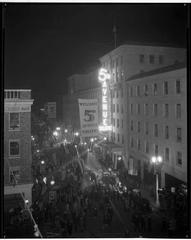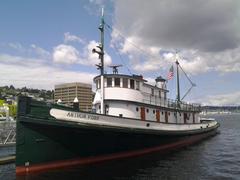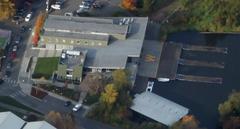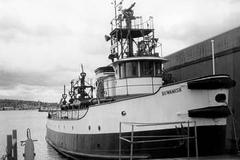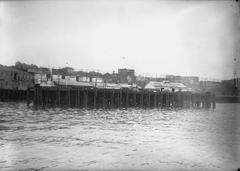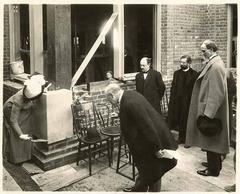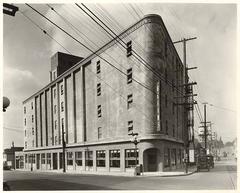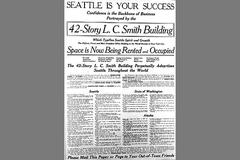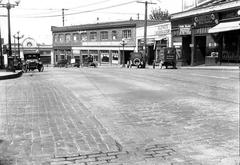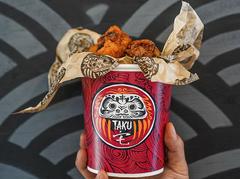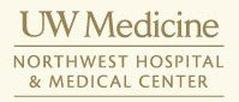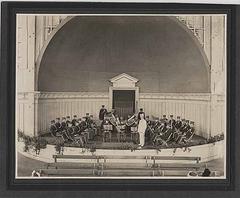
Pike Place Market Visiting Hours, Tickets, and Guide to Seattle’s Historic Landmark
Date: 03/07/2025
Introduction
In the heart of downtown Seattle, Pike Place Market stands as a living symbol of the city’s heritage, community, and vibrant culture. Founded in 1907 to connect local farmers with the public and combat high produce prices, the market has grown into a sprawling, multi-level hub filled with fresh seafood, artisan crafts, eclectic eateries, and lively street performances. With free admission and daily hours from 9:00 AM to 6:00 PM, Pike Place Market welcomes millions each year to experience a unique blend of tradition and innovation (Pike Place Market History; The Tourist Checklist).
Pike Place Market is more than a place to shop—it’s an enduring cultural landmark reflecting Seattle’s commitment to inclusivity, sustainability, and economic vitality. From the famous fishmongers and vibrant flower stalls to the original Starbucks and diverse community events, the market offers something for everyone. Accessibility features, including elevators and ramps, ensure all visitors can enjoy this historic site (Pike Place Market Official; citybop.com).
This comprehensive guide covers visiting hours, ticketing, history, and insider tips to help you plan an unforgettable trip to one of Seattle’s most cherished destinations (Friends of the Market; treksplorer.com).
The History and Evolution of Pike Place Market
Early Foundations and Civic Origins
Pike Place Market’s story began amid Seattle’s rapid urban expansion in the early 1900s. In response to inflated food prices, the City Council, led by Thomas P. Revelle, established the market in 1907 to create a direct connection between farmers and consumers (Pike Place Market History). On its opening day, local farmers such as H. O. Blanchard sold produce directly to eager crowds, cementing Pike Place as a vital community resource (Friends of the Market).
Growth, Expansion, and Social Role
By the 1920s, Pike Place Market had rapidly expanded, with new buildings like the Sanitary Market upholding public health standards (Seek Seattle). The market quickly became a social and economic hub, welcoming artisans, performers, and entrepreneurs. Today, the historic district spans seven acres, with a broader 22-acre area for ongoing development (Seattle Historic Preservation).
Challenges, Preservation, and Community Activism
The market faced existential threats in the 1960s and 1970s as urban development and supermarkets gained traction. Community activists, led by the “Friends of the Market,” rallied to save the market, resulting in the establishment of the Pike Place Market Historical District and Market Historical Commission in 1971. Subsequent restoration initiatives preserved and revitalized this “soul of Seattle” (Pike Place Market History; Seattle Historic Preservation).
Diversity, Inclusion, and Cultural Legacy
From early Japanese American farmers (until their WWII internment) to today’s Hmong flower growers and immigrant entrepreneurs, Pike Place Market has always been a tapestry of cultures. Women have also played key roles as business owners and preservationists. The market supports over 350 residents in affordable housing above the market, funded by the Pike Place Market Foundation (iExplore; TheTravel).
Visiting Pike Place Market: Hours, Tickets & Practical Tips
- Hours: Open daily, 9:00 AM – 6:00 PM. Some vendors may open earlier or close later, especially on weekends and during special events.
- Admission: Free entry for all visitors. Tickets are only required for select guided tours or special events, which can be booked via the official website.
- Getting There: Centrally located in downtown Seattle, the market is easily accessible by public transit (buses and light rail). Parking is limited; use nearby garages or public transportation when possible.
- Accessibility: Elevators, ramps, and wheelchair-friendly pathways are available, though some areas have uneven surfaces due to the site’s historic nature.
- Nearby Attractions: Seattle Aquarium, Waterfront Park, Gum Wall, and the Seattle Art Museum are all within walking distance.
- Events: Check the event calendar for festivals, concerts, and community gatherings.
- Photo Spots: Capture the iconic “Public Market Center” sign, fishmongers in action, the colorful flower stalls, and panoramic MarketFront views.
Modernization and Ongoing Significance
The 2017 MarketFront expansion brought new vendor spaces, public plazas, and improved waterfront access, all while preserving the market’s historic charm (Zippia). Managed by the Pike Place Market Preservation & Development Authority (PDA), the market champions small businesses and ensures fresh food access for Seattle residents (TheTravel).
With over 10 million annual visitors, Pike Place Market remains one of the nation’s most visited attractions, driving significant economic activity and community engagement (Travellemming).
Pike Place Market: Key Attractions and Experiences
The Fishmongers and Fish Toss
Experience the market’s world-famous fishmongers at Pike Place Fish Market, where the lively tradition of tossing fish entertains crowds daily (citybop.com).
The Original Starbucks
Visit the original Starbucks at 1912 Pike Place, opened in 1971. The store’s vintage decor and historic significance make it a must-see for coffee lovers (apassionandapassport.com).
MarketFront Pavilion
The MarketFront offers panoramic Elliott Bay views, public art, and new vendors, including Old Stove Brewing with its dramatic window wall (citybop.com).
The Gum Wall
This quirky landmark, located in Post Alley, is a vibrant and ever-changing mosaic of chewed gum—an unusual but popular photo spot (citybop.com).
Flower Stalls and Hmong Farmers
Seasonal flower stalls, largely run by Hmong families, provide a dazzling display of affordable bouquets and highlight the market’s rich agricultural heritage (emeraldpalate.com).
Artisan Goods and Foodie Delights
Discover unique crafts, handmade jewelry, and locally-produced foods. Must-try tastes include fresh seafood, piroshkies, cheese from Beecher’s, mini doughnuts, and chowder (seattlesecrets.org; emeraldpalate.com; theworldandthensome.com).
Lower Levels and Hidden Gems
Explore offbeat attractions like The Giant Shoe Museum, comic shops, improv theaters, and more (emeraldpalate.com).
Live Performances
Buskers and musicians enliven the market daily. For more entertainment, enjoy cabaret shows at Can Can Culinary Cabaret (emeraldpalate.com).
Community Impact and Economic Significance
Pike Place Market is managed by the PDA as a community trust, supporting affordable housing, food banks, and healthcare services for low-income residents (pikeplacemarket.org). It’s a powerful economic engine, supporting over 500 small businesses and providing thousands of jobs. In 2024, the surrounding region saw 40 million visitors, with the market at the center of Seattle’s $8.8 billion tourism economy (komonews.com; seattlewire.com).
Planning Your Visit: Tips and Tools
- Arrive Early: Weekday mornings after 9:00 AM are calmest.
- Explore All Levels: Venture to lower floors for unique shops and hidden attractions.
- Bring Cash: Some vendors are cash-only.
- Use the Market Map: Plan your route with the official online directory.
- Respect Local Etiquette: It’s “Pike Place” or “The Market,” not “Pike’s Place.”
- Dress Comfortably: Wear good shoes for uneven surfaces and bring a rain jacket—Seattle’s weather is unpredictable.
- Parking: Use the Pike Place Market parking garage; early arrival secures lower rates.
- Public Transit: Westlake Light Rail Station is nearby.
Accessibility
The market’s historic design includes ramps, elevators, and accessible restrooms, but some areas may have narrow or uneven pathways. Plan your route using the market directory and request assistance if needed.
Special Events and Guided Tours
Throughout the year, Pike Place Market hosts festivals, concerts, and art events. Guided tours—ranging from history walks to chef-led food tastings—offer deeper insight and often include line-skipping privileges (apassionandapassport.com).
Frequently Asked Questions (FAQ)
Q: What are Pike Place Market’s visiting hours?
A: 9:00 AM – 6:00 PM daily, with some vendors opening earlier.
Q: Is there an entrance fee or ticket required?
A: No; entry is free. Tickets are only needed for tours or select events.
Q: Are pets allowed?
A: Pets are allowed in outdoor areas; service animals are welcome everywhere.
Q: Is the market accessible for wheelchair users?
A: Yes; elevators, ramps, and accessible facilities are available, though some historic areas can be challenging.
Q: Where can I take great photos?
A: The “Public Market Center” sign, fishmongers, flower stalls, and MarketFront Pavilion.
Visuals and Resources
- [Image: Pike Place Market Entrance - Alt: “Pike Place Market entrance sign with bustling crowd”]
- [Image: Fishmongers throwing fish - Alt: “Pike Place Market fishmongers tossing salmon”]
- [Image: MarketFront Pavilion views - Alt: “Panoramic view of Puget Sound from MarketFront Pavilion”]
- Interactive Map: Pike Place Market Official Directory
- [Virtual Tour Video: Explore Pike Place Market (Embedded)]
Summary and Final Tips
Pike Place Market is a cornerstone of Seattle’s culture, economy, and community spirit. Open daily with free admission, it offers diverse experiences—from historic sights and artisan goods to world-class food and unforgettable performances. Its enduring commitment to diversity and inclusion ensures that every visit is as welcoming as it is memorable.
For up-to-date information, maps, and personalized itineraries, download the Audiala app, follow official social media channels, and explore related guides to Seattle’s top attractions.
References and Further Reading
- This is a sample text. (Pike Place Market History)
- This is a sample text. (Pike Place Market Official)
- This is a sample text. (The Tourist Checklist)
- This is a sample text. (CityBop)
- This is a sample text. (Treksplorer)
- This is a sample text. (Seattle Historic Preservation)
- This is a sample text. (Friends of the Market)
- This is a sample text. (Pike Place Market Master Plan)












